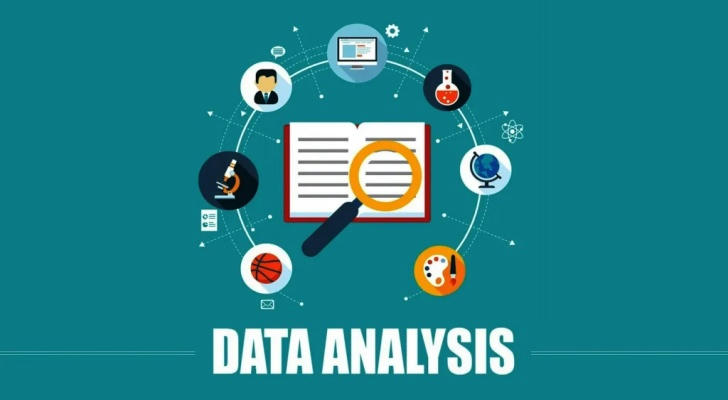Data Analysis Made Simple: Easy Ways to Boost Your Work Efficiency
Data is the new oil—powering decisions, shaping marketing strategies, and determining how businesses grow. Yet, for many professionals, data analysis still feels overwhelming. Juggling spreadsheets, interpreting metrics, and cleaning raw data can eat up valuable time and energy.
But here’s the good news: you don’t have to be a data scientist—or spend hours buried in Excel—to harness the power of data effectively. With the right mindset, tools, and strategies, even non-technical professionals can dramatically improve their data workflow.
In this article, we’ll explore easy, actionable ways to streamline your data analysis tasks, enhance productivity, and make data work for you.

1. Automate the Tedious Parts
Manual data entry and repetitive tasks are notorious time-wasters. In fact, a report from McKinsey & Company found that up to 30% of working hours in data-heavy roles are spent on tasks that could be automated.
Solution:
Use automation tools like:
Microsoft Power Automate (formerly Flow) – for moving data between apps like Excel, Outlook, and Teams.
Zapier – to link tools like Google Sheets, Slack, and CRM systems.
Python with Pandas library – a lightweight and intuitive solution for automating data cleaning and transformation.
Even setting up Excel macros can save hours of clicking.
💡 Quick Tip: Try using Google Sheets with built-in Apps Script for light automation—even basic scripts can handle data parsing, duplicate removal, and formatting.
2. Clean Your Data Like a Pro
“Garbage in, garbage out” isn’t just a catchphrase—it’s the truth. Messy, inconsistent, or incomplete data leads to faulty analysis and poor decision-making.
Key steps for effective data cleaning:
Standardize date and currency formats
Remove duplicates
Fill in missing values, or flag them for review
Normalize text entries (e.g., “NY” vs. “New York”)
According to a Harvard Business Review study, 47% of newly created data records have at least one critical error, making cleaning an essential step—not an optional one.
Tools like OpenRefine, Trifacta, and even Excel’s Power Query are great for non-coders looking to clean data efficiently.
3. Use Visualizations to Understand Fast

The human brain processes visuals 60,000 times faster than text (3M Corporation study). This makes charts and dashboards incredibly powerful for digesting large datasets.
Instead of scanning rows of numbers, imagine a quick bar chart showing year-over-year sales growth or a heatmap revealing which U.S. states brought in the most revenue.
Best tools for visual storytelling:
Tableau – powerful and user-friendly with drag-and-drop visuals
Google Data Studio – free and perfect for integrating Google Analytics, Sheets, and BigQuery
Power BI – great for Microsoft Office users and seamless Excel integration
Visualization isn’t just aesthetic—it reduces analysis time and enhances communication, especially in cross-functional teams.
4. Use Templates and Pre-Built Dashboards
You don’t have to reinvent the wheel. Many tools and platforms offer templates and starter dashboards tailored to specific industries or functions (marketing, finance, HR, etc.).
For example:
Klipfolio provides ready-to-use dashboards for small businesses.
Supermetrics for Google Sheets automates marketing performance reports.
Looker Studio (formerly Google Data Studio) offers dozens of community-made templates.
Templates cut down setup time and reduce room for error—perfect for tight deadlines or monthly reporting.
5. Ask the Right Questions
Before diving into a sea of numbers, always define what problem you're trying to solve. Otherwise, you risk “analysis paralysis”—a real and common problem where more data leads to less clarity.
Ask:
What metrics actually impact business outcomes?
Are we looking for trends, anomalies, or projections?
Is this analysis for a strategic decision or regular reporting?
MIT Sloan School of Management highlights that teams who align analysis with business goals experience 23% faster decision-making.
6. Use Natural Language Tools
Thanks to advancements in AI, tools like ChatGPT, Google Bard, or Excel Copilot can help interpret data queries in plain English. You can ask:
“What were the top 5 revenue months last year?”
“Show me a trendline for website traffic by region.”
These tools reduce the barrier to entry, making analysis approachable for non-experts.
7. Collaborate in the Cloud
Remote work and cross-department projects require smoother data collaboration.
Google Sheets and Excel Online allow for real-time collaboration.
Notion and Airtable combine database logic with document-style notes for context-rich analysis.
Monday.com integrates dashboards and project tracking.
Collaborative tools eliminate version control issues and help stakeholders make quicker, more informed decisions.
Real-World Example: How One Marketer Saved 10 Hours/Week

Jessica, a digital marketer at a Boston-based startup, used to spend hours each week manually copying performance data from multiple ad platforms into spreadsheets. After setting up Supermetrics to automatically pull campaign data into Google Sheets, and linking it to Google Data Studio, she cut reporting time by 80%.
“It was a game-changer,” she said. “Now I focus on analysis and strategy instead of admin work.”
Conclusion
Data analysis doesn’t have to be overwhelming or reserved for data scientists. With the right approach—automating repetitive tasks, cleaning efficiently, visualizing trends, and using collaborative tools—anyone can become data-savvy.
Whether you work in marketing, operations, sales, or admin support, improving your data analysis workflow can elevate your performance and free up hours every week.
Start small, build confidence, and soon, data will go from being a chore to one of your most powerful assets at work.
